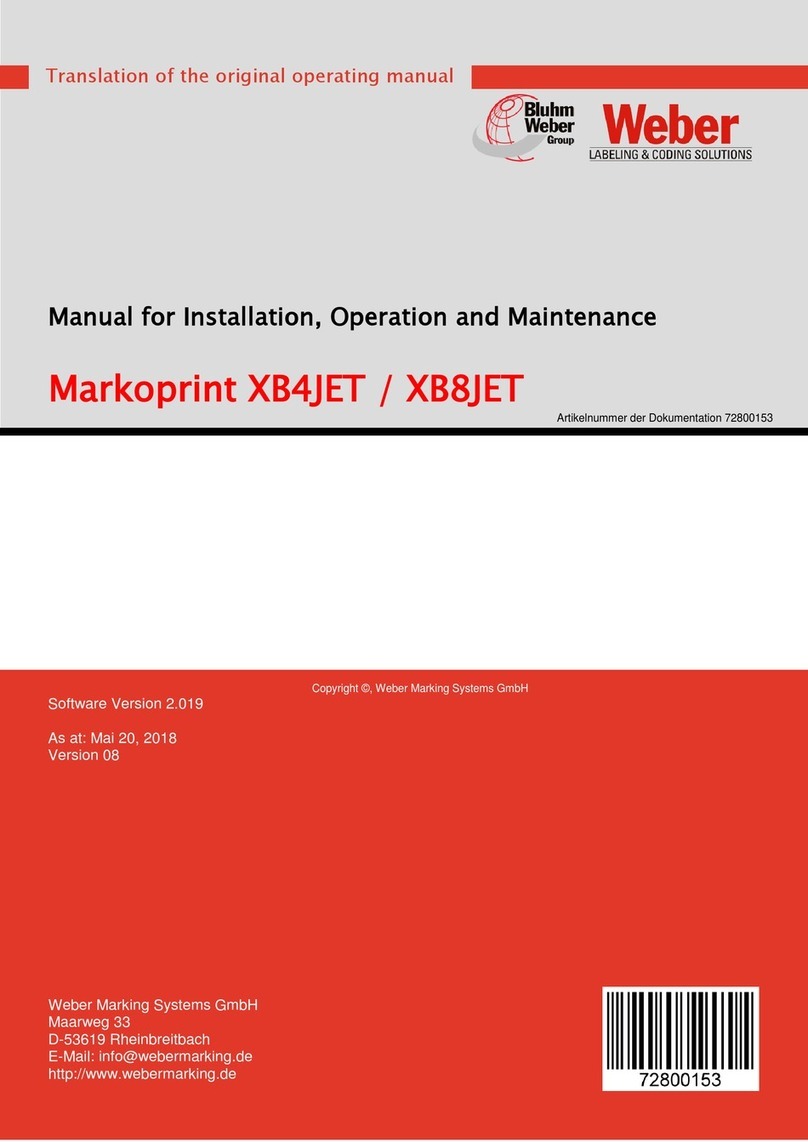9.0 Placing in Operation
9.1 Preliminary Measures
•Check whether the local supply power is compatible with that of the device (refer to name plate) and
that the connection value of the conveyor is within the allowable power range.
•Connect controller according to the delivered connection schematic
•Set rated value to zero
•Turn off release (as far as relevant)
The controller is now basically functional and can be switched on (power, release).
Notice
With the control device described herein, it is possible to adjust the resonant frequency
of the connected conveyor. Because in this case even a slight rated-value preset can
result in the full amplitude oscillations of the conveyor, one must be especially careful to
prevent damage to the conveyor due to the limiting operation of the magnet.
The range of the resonant frequency is practically without feedback of the acceleration, but would not be
useful anyway, since the conveyor can be neither used under load nor would it be controllable. Therefore,
a certain frequency interval from the resonant frequency must be adjusted. The frequency interval can be
under as well as over the resonant frequency.
Resonant frequencies: Due to the construction of the spring-mass system of the conveyor, the system
can resonate at a number of oscillation frequencies. The additional resonance points are at a multiple of
the desired frequency. In critical cases, the automatic frequency search cannot recognize them; the fre-
quency must then possibly be set by hand.
9.2 Working Frequency of the Built-in Magnets
Because at small frequency adjustments the current flowing through the magnet may possibly increase,
by the first usage of the current in the magnet circuit the current should be checked with an effective
value meter, and the warmth developing in the magnet should be monitored.
In order to prevent an unduly high current passing through the magnet and the possible overloading of
the magnet, it must be observed that the magnets also operate within the allowable working frequency
range.
9.3 Measurement of the Output Voltage and the Output Current
Because there is an electronic converter with pulse amplitude modulated switching signals at the device
output, the voltage and current values cannot be measured with a conventional meter. To measure these
values, effective value measurement devices must be used; for example, an iron vane instrument (analog
meter). It is recommended that analog instruments be used, because electronic multi-meters will not indi-
cate reliable value readings in this case.
9.4 Restore Rated Value
If, after the adjustment process, the device is found to be out of its allowed state, for example limit opera-
tion or an excessively high current flow which necessitates a quick main power switch-off, then by the
next power on operation, the adjusted rated value can be reset as follows:
With device still switched off, depress key and then switch on the main power switch.
By this procedure, the previously set rated-value for the oscillation amplitude will be set to zero. Now, the
rated-value can be again increased or the frequency adjustment can be changed, among other possible
modifications.
!




























